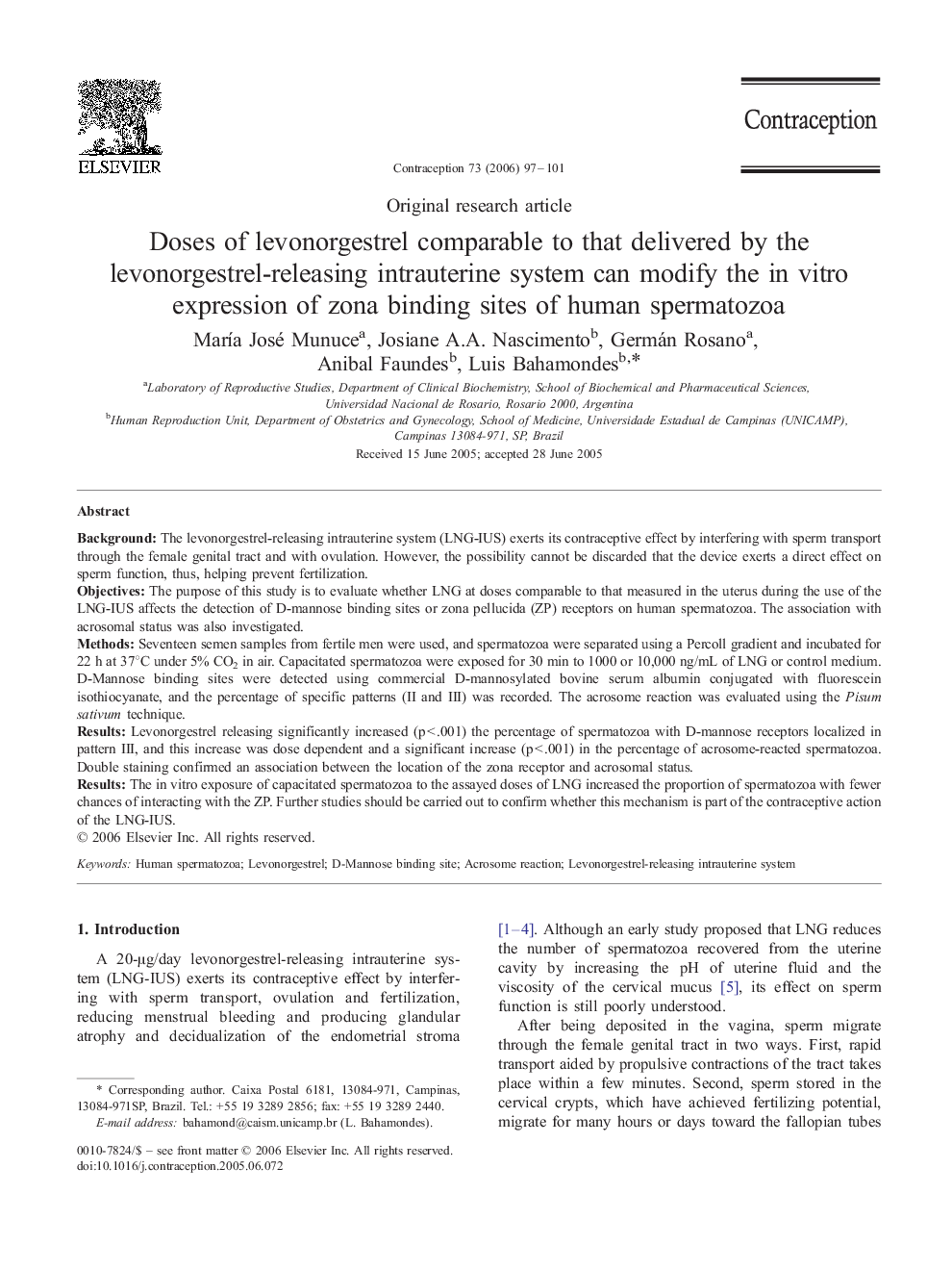| کد مقاله | کد نشریه | سال انتشار | مقاله انگلیسی | نسخه تمام متن |
|---|---|---|---|---|
| 3916252 | 1251542 | 2006 | 5 صفحه PDF | دانلود رایگان |

BackgroundThe levonorgestrel-releasing intrauterine system (LNG-IUS) exerts its contraceptive effect by interfering with sperm transport through the female genital tract and with ovulation. However, the possibility cannot be discarded that the device exerts a direct effect on sperm function, thus, helping prevent fertilization.ObjectivesThe purpose of this study is to evaluate whether LNG at doses comparable to that measured in the uterus during the use of the LNG-IUS affects the detection of D-mannose binding sites or zona pellucida (ZP) receptors on human spermatozoa. The association with acrosomal status was also investigated.MethodsSeventeen semen samples from fertile men were used, and spermatozoa were separated using a Percoll gradient and incubated for 22 h at 37°C under 5% CO2 in air. Capacitated spermatozoa were exposed for 30 min to 1000 or 10,000 ng/mL of LNG or control medium. D-Mannose binding sites were detected using commercial D-mannosylated bovine serum albumin conjugated with fluorescein isothiocyanate, and the percentage of specific patterns (II and III) was recorded. The acrosome reaction was evaluated using the Pisum sativum technique.ResultsLevonorgestrel releasing significantly increased (p<.001) the percentage of spermatozoa with D-mannose receptors localized in pattern III, and this increase was dose dependent and a significant increase (p<.001) in the percentage of acrosome-reacted spermatozoa. Double staining confirmed an association between the location of the zona receptor and acrosomal status.ResultsThe in vitro exposure of capacitated spermatozoa to the assayed doses of LNG increased the proportion of spermatozoa with fewer chances of interacting with the ZP. Further studies should be carried out to confirm whether this mechanism is part of the contraceptive action of the LNG-IUS.
Journal: Contraception - Volume 73, Issue 1, January 2006, Pages 97–101